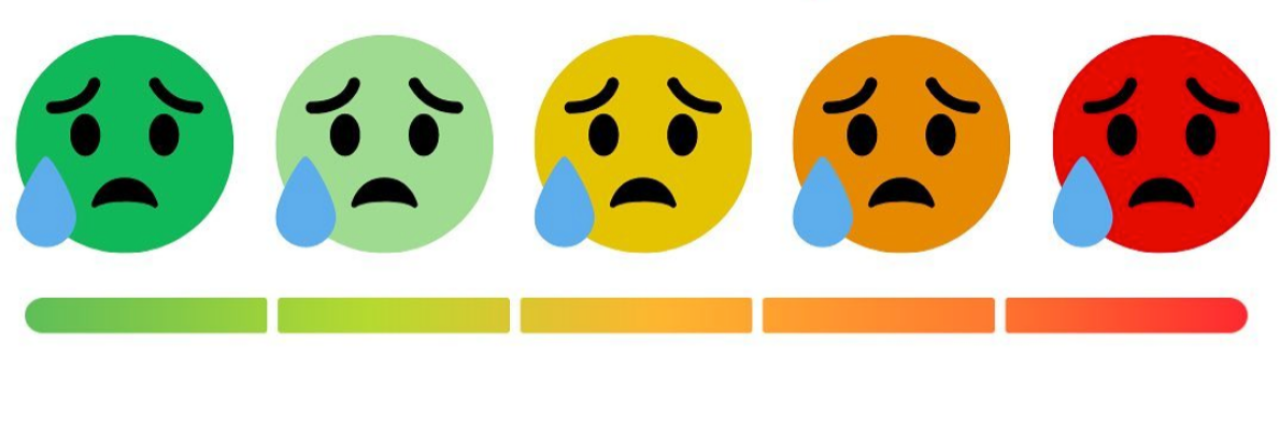For those who are unfamiliar with anxiety, there are many types of anxiety disorders, ranging from generalized anxiety disorder (GAD) to panic disorder to different phobias. Though anxiety manifests differently for everyone, common symptoms may include feeling on-edge, struggling with irritability, experiencing panic attacks and avoiding situations that trigger anxiety.
The Depression Project, founded by two brothers who want to help people with mental illness, wanted to raise awareness about what it’s really like to live with an anxiety disorder day-to-day, so they posted an “anxiety scale” graphic on Instagram. The states are divided into “high-functioning,” “moderate” and “crisis/panic.”
As the graphic shows, anxiety exists on a spectrum of types and severity. It is not a “one-size fits all” illness. This scale is a valuable resource for people who struggle not only with anxiety, but also with how to explain it to friends and family.
Personally, this graphic gives me the opportunity to start a conversation with someone about my anxiety without having to find all the right words to tell them how I feel at any given point. It also helps illustrate that a “good day” for me is not necessarily a lack of anxiety, but more appropriately, it is a level of functionality that I may not have on other days.
Below, I’ve broken down each stage, and what they mean to someone experiencing anxiety:
1. High-Functioning
High-functioning anxiety is when someone’s anxiety doesn’t keep them from carrying out their daily activities. Though often mistaken for being “well,” a high-functioning day does not mean the person is not still experiencing anxiety. It just means the anxiety is not completely impairing their ability to accomplish tasks like going to work, caring for themselves and running errands. For someone with anxiety, being in the “high-functioning” zone can feel like a “good day” where they are able to cope with the world better than they may be able to many other days.
2. Moderate
The moderate zone refers to the times when anxiety, though it may feel suffocating, has not incapacitated the individual entirely. People with moderate anxiety are able to accomplish the bare minimum that day, but there is a sense of exhaustion with each passing hour, as well as feeling like everything they do is a great challenge that they may or may not be able to cope with. This can, unfortunately, become the “normal” level for many people who struggle with anxiety – meaning they are often easily overwhelmed with things that individuals without anxiety don’t seem as overwhelmed by.
3. Crisis/Panic
The crisis or panic zone on the anxiety scale is a severe level of anxiety that leaves a person struggling with even the simplest tasks. They may be unable to leave the house because of debilitating anxiety pain or may break down in a panic attack by being completely overwhelmed and unable to cope. People who do not have anxiety may not understand why the person is struggling to even breathe when it appears that “nothing is wrong.” There is a misconception about anxiety that all severe anxiety results from an external trigger – however, that is not always the case. Severe anxiety can come from being overwhelmed by internal thoughts and feelings that are not visible to the people around them. This severe level of anxiety may last a few hours, days, or even longer if not properly managed and treated.
Although anxiety exists on a spectrum, its presence is never absent. As the graphic shows, even a “high functioning” day does not mean I am free from anxiety. That may be the hardest part to explain to other people. I am always anxious. Sometimes I can struggle through a day, do some work, interact with people. Some days just a trip to the grocery store is overwhelming. And some days just the thought of leaving the house is enough to cause me to break down in tears.
Tools that help me explain this difficult mental illness are extremely valuable. The scale allows me to better communicate how my anxiety is neverending. It is always there. Some days I may be more outwardly functional than others, but my anxiety remains. It exists on a spectrum that can be difficult to explain. But illustrations and graphics can be a valuable tool for explaining my daily struggle to those who may not truly understand what it is like to live with anxiety.

